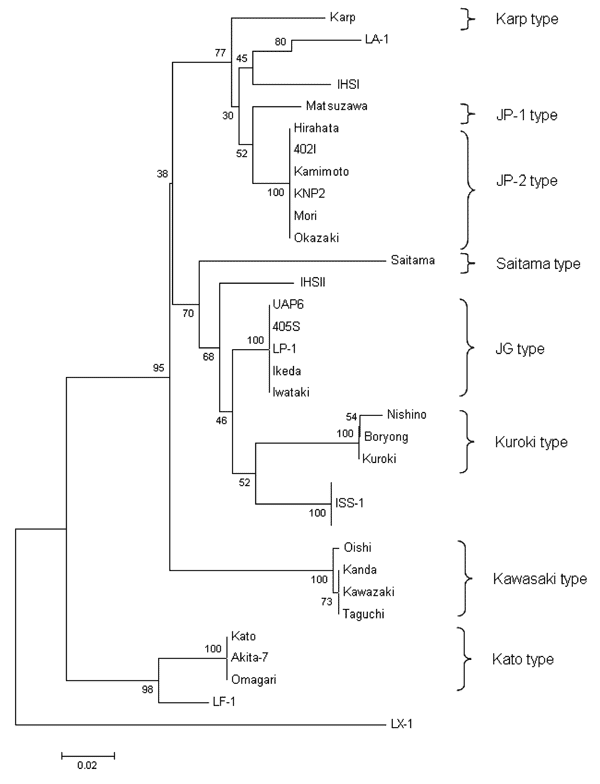Volume 12, Number 10—October 2006
Dispatch
Scrub Typhus in Himalayas
Figure

Figure. Phylogenetic tree produced by unweighted pair-group method with arithmetic means that shows the positions of IHS I and IHS II genotypes based on the partial 56-kDa sequence homologies. Numbers at nodes indicate bootstrap values, and the scale bar shows genetic distance of 0.02.
Page created: November 10, 2011
Page updated: November 10, 2011
Page reviewed: November 10, 2011
The conclusions, findings, and opinions expressed by authors contributing to this journal do not necessarily reflect the official position of the U.S. Department of Health and Human Services, the Public Health Service, the Centers for Disease Control and Prevention, or the authors' affiliated institutions. Use of trade names is for identification only and does not imply endorsement by any of the groups named above.